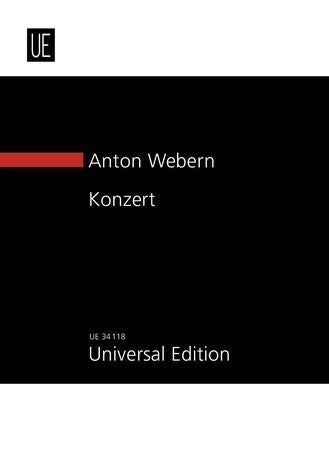
UNIVERSAL EDS/WIENER/PRESSER - 864872
Webern Concerto for 9 instruments - op. 24
Composer: Anton Webern
Publisher: Universal Edition
Format: Study Score
Webern Concerto for 9 instruments - op. 24
Juilliard Store
144 West 66th Street
New York NY 10023
United States
Choose options
Webern Concerto for 9 instruments - op. 24
Juilliard Store
144 West 66th Street
New York NY 10023
United States
Webern Concerto for 9 instruments - op. 24
Juilliard Store
144 West 66th Street
New York NY 10023
United States
Webern dedicated this piece to Arnold Schönberg for his 60th birthday in 1934. He had been working on it from 1931 to 1934; it is an especially consistent example of his late style, in which it was a question of realising “comprehensibility as the paramount principle when presenting a musical idea.” The structure of the row is already utile. It is comprised of four three-note groups (minor second + major third); the second is the retrograde inversion, the third is the retrograde and the fourth is the inversion of the first. Thus, the motivic work here is even more consistently retro-set in the row than in the Symphony Op. 21.
At the outset of the first movement, the three-note groups sound in the winds, differentiated in articulation and pitch duration; these successive or simultaneous groups of three predominate the entire movement (again, a sonata-movement form).
The slow movement – rhythmically stereotypic in quarter notes throughout – assigns two pitches each of the three-note groups to the piano accompaniment, each formed only of the dyad of major third and major seventh. The remaining row tones figure as “melody.” The three-note groups again become manifest in the accelerated final movement. Altogether, then, the piece also bears traits of a broad cycle of variations; the work turns the “material,” the crude pitch relationships, into sound. The powerful expressiveness which still pulses through the piece is no longer that of the subject, that of the composer. “The composer no longer ‘bends’ the material to express himself; he “bows” to it to serve its presentation” (R. Schulz).
Manfred Angerer
